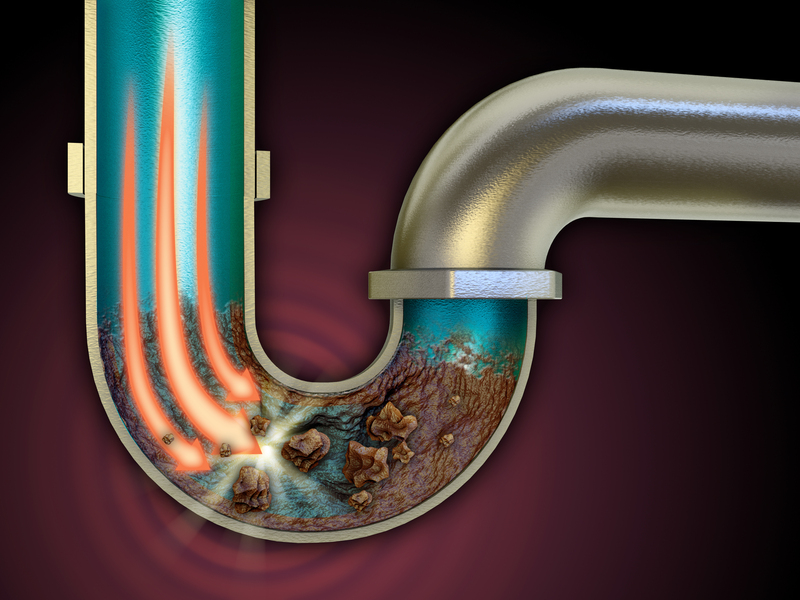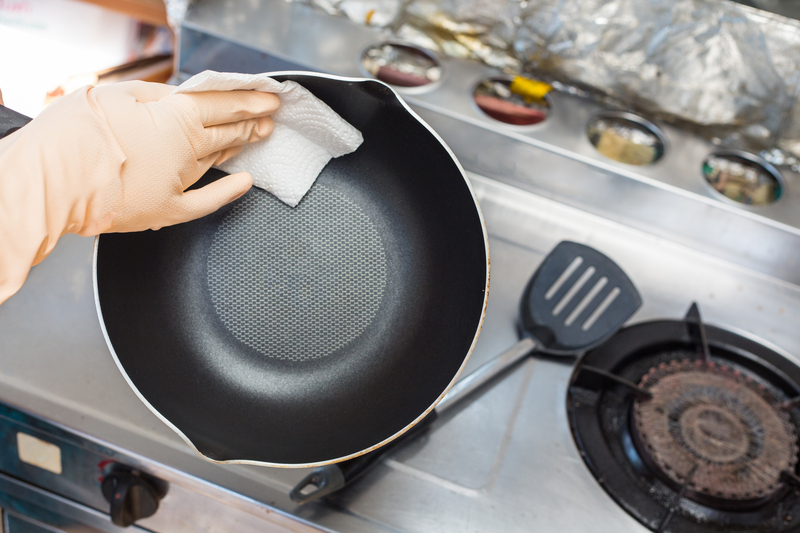Discover the Best Methods for Curtain Cleaning
Curtains, often the overlooked gems of interior decor, not only enhance the visual appeal of your spaces but also play an essential role in maintaining privacy and controlling natural light. However, over time, they tend to gather dust, odors, and allergens, making curtain cleaning an essential yet often neglected part of household care. In this comprehensive guide, you'll discover the best methods for curtain cleaning that will help you keep your draperies looking fresh, extending their life, and improving the air quality in your home.

Why Curtain Maintenance Matters
By neglecting regular curtain cleaning, you're exposing your household to accumulated dust, allergens, and even mold. Clean drapes not only look better but also contribute to healthier indoor air. Whether you own costly bespoke drapes or simple sheers, knowing how to clean window curtains correctly ensures their longevity and maintains their pristine appearance.
Main Methods of Curtain Cleaning
There is no one-size-fits-all approach to cleaning drapes and curtains. The right method often depends on the fabric, size, and the type of soiling. Below, we've detailed the most effective ways to clean curtains, from routine maintenance to deep cleaning techniques.
1. Regular Maintenance: Keeping Curtains Dust-Free
Routine care plays a crucial role in preventing dirt buildup, which can damage and discolor fabric over time. Here are a few simple yet effective methods to maintain clean curtains:
- Vacuuming: Use a soft-brush vacuum attachment to gently remove dust each week. Move from top to bottom in a slow, sweeping motion.
- Shaking: Take lightweight curtains down (if manageable) and shake them outside to get rid of dust and loose particles.
- Lint Roller: For pet hair and small debris, a lint roller can quickly clean surface areas.
Tip: Always check your curtain's care label before using any equipment. Some delicate fabrics may require gentler handling.
2. Hand Washing Curtains: Best for Delicate Fabrics
Hand washing is a safe method for delicate materials such as lace, voile, or silk, minimizing the risk of shrinkage or tearing.
- Remove Curtain Accessories: Unhook all rings, hooks, and trims.
- Prepare a Cleaning Solution: Fill a large tub with lukewarm or cold water and add a mild detergent.
- Soak and Agitate: Submerge the curtains and gently agitate. Avoid scrubbing or wringing, as this can harm the fibers.
- Rinse Thoroughly: Use clean, cool water to rinse until all soap is removed.
- Dry Flat: Lay the curtains flat on a clean towel to air dry, avoiding direct sunlight to prevent fading.
Hand washing window curtains offers control, preserving delicate weaves and embellishments.
3. Machine Washing Curtains: Safe for Most Fabrics
For many cotton, polyester, or synthetic blend curtains, machine washing is often the quickest and most convenient option. Before proceeding, always read the manufacturer's label for specific curtain washing instructions.
- Pre-Treat Stains: Gently blot stains with a stain remover before placing the curtains in the machine.
- Choose the Right Settings: Wash using a gentle cycle, cold water, and mild detergent to avoid shrinkage or fading.
- Load Carefully: Don't overload the washer. If your curtains are long, fold them loosely or wash them alone for best results.
- Drying: Hang curtains while still damp to minimize wrinkles. Avoid high heat, as this can damage the fabric and lining.
Pro-tip: If your curtains have linings, make sure both the face fabric and lining are machine washable before proceeding.
4. Steam Cleaning: Effective and Chemical-Free
Steam cleaning curtains is a popular chemical-free technique that uses high-temperature steam to remove dust, kill bacteria, and refresh fabrics.
- Use a Garment Steamer: Fill the steamer with water and heat up as instructed.
- Steam from Top to Bottom: Hold the nozzle close, but not touching the fabric, and slowly pass it down the length of your curtains.
- Allow to Dry: Let the curtains air dry after steaming, and only close them once fully dry.
Steam cleaning is ideal for heavy drapes that are difficult to take down and for households sensitive to chemicals.
5. Dry Cleaning: The Go-To Option for Specialty Fabrics
For many luxury, lined, or non-washable fabrics (like velvet or interlined curtains), professional curtain dry cleaning is often recommended.
- Check the Label: Look for "dry clean only" instruction on the care tag.
- Locate a Specialist: Seek a reputable dry cleaner with experience in curtain care.
- Communicate Issues: Mention any stains, odors, or special embellishments to ensure proper treatment.
Dry cleaning is a safe option for delicate, vintage, or intricately decorated window treatments, ensuring no damage occurs during the process.
Addressing Common Curtain Stains and Odors
Stains and lingering odors require targeted attention when cleaning window curtains. Whether dealing with food splatters, grease, or mustiness, try these tips:
- Spot Cleaning: Use a gentle cleaner and a soft, damp cloth to target stains. Always test an inconspicuous area first.
- Baking Soda for Odors: Sprinkle baking soda on the curtains, let it sit for 30 minutes, then vacuum away. Baking soda neutralizes odors effectively.
- Lemon and Vinegar: For stubborn smells, lightly mist curtains with a solution of lemon juice and water or diluted vinegar. Ensure adequate ventilation and spot test first to prevent discoloration.
Special Considerations for Different Curtain Types
Certain curtain materials and designs require specialized care. Here are a few tips on how to clean unique or delicate curtains:
- Lace Curtains: Always hand wash lace using cool water and mild detergent.
- Blackout Curtains: Never submerge completely. Spot clean and vacuum; read labels for extra care instructions.
- Sheer Curtains: Handle delicately, as they snag easily. Prefer gentle hand washing or a delicate cycle in the machine.
- Velvet Drapes: Dry clean only. At home, you can use a soft brush or a lint roller to keep the surface fresh between professional cleanings.
Helpful Tips for Easier Curtain Cleaning
- Read Manufacturer Instructions: Always follow the cleaning guidelines on your curtain labels.
- Schedule Regular Cleaning: Try to clean or at least dust your curtains every few months to prevent permanent staining or discoloration.
- Maintain Hardware: While cleaning curtains, remember to dust and wipe down rods, finials, and tiebacks as well.
- Inspect for Damage: Check for sun damage, holes, or fraying during each cleaning to catch issues early.
- Iron or Steam When Needed: If curtains become wrinkled, iron according to fabric tolerance or steam to restore their neat appearance.
Choosing Between DIY and Professional Curtain Cleaning Services
With so many curtain cleaning techniques available, you may wonder when to clean curtains at home and when to hire experts.
- DIY Cleaning: Suitable for small, manageable, and washable curtains that do not have heavy linings or embellishments.
- Professional Service: Best for floor-length, difficult-to-remove curtains, heavily soiled drapes, or fabrics labeled as "dry clean only."
Many professional curtain cleaning services offer on-site options, which can save you the hassle of removing and rehanging heavy drapes.
Frequently Asked Questions About Curtain Cleaning
How often should you clean curtains?
Ideally, curtains should be dusted or vacuumed every week and deep cleaned every 3-6 months, or as needed.
Can you wash curtains in the washing machine?
Most cotton, polyester, and synthetic curtain fabrics are machine washable on a gentle cycle. Always check the label first to avoid mistakes.
What is the safest way to remove stains from curtains?
The safest method is spot cleaning with a mild solution and a soft cloth. For stubborn stains, consult the care label or seek professional help.
Should blackout or lined curtains be washed differently?
Yes, blackout and lined curtains often need special care and should not be soaked or wrung out. Spot clean or ask a professional for advice.

Benefits of Regular Curtain Cleaning
- Improves Indoor Air Quality: Removing dust and allergens results in cleaner, fresher air for your home or office.
- Enhances Decor: Clean curtains restore brightness and beauty to your living space.
- Extends Curtain Lifespan: Proper care prevents premature aging and fabric deterioration.
- Reduces Odors: Odor-trapping fabrics need regular cleaning to avoid lingering smells.
Conclusion: Elevate Your Space with Expert Curtain Cleaning
Now that you've discovered the best methods for curtain cleaning, you can choose the approach that best suits your fabric type, lifestyle needs, and schedule. Keeping curtains clean is more than a matter of aesthetics--it's a step towards a healthier, more inviting home. Try these techniques today to rejuvenate your draperies and let your windows shine!
Remember: The key to preserving your curtain's beauty and performance lies in regular attention and using the most appropriate cleaning methods. Don't wait for heavy soiling; keep your curtains pristine all year round!


